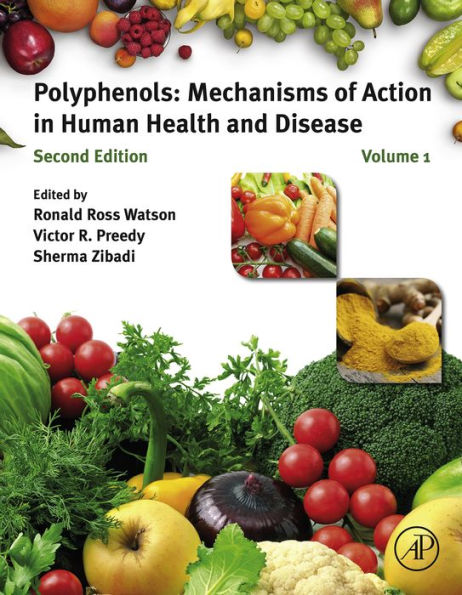Polyphenols: Mechanisms of Action in Human Health and Disease
Polyphenols: Mechanisms of Action in Human Health and Disease, Second Edition describes the mechanisms of polyphenol antioxidant activities and their use in disease prevention. Chapters highlight the anti-inflammatory activity of polyphenols on key dendritic cells, how they modulate and suppress inflammation, and how they are inactivated or activated by metabolism in the gut and circulating blood. Polyphenols have proven effective for key health benefits, including bone health, organ health, cardiac and vascular conditions, absorption and metabolism, and cancer and diseases of the immune system. They are a unique group of phytochemicals that are present in all fruits, vegetables and other plant products. This very diverse and multi-functional group of active plant compounds contain powerful antioxidant properties and exhibit remarkable chemical, biological and physiological properties, including cancer prevention and cardio-protective activities. - Expands coverage on green tea, cocoa, wine, cumin and herbs - Outlines their chemical properties, bioavailability and metabolomics - Provides a self-teaching guide to learn the mechanisms of action and health benefits of polyphenols
1139968301
Polyphenols: Mechanisms of Action in Human Health and Disease
Polyphenols: Mechanisms of Action in Human Health and Disease, Second Edition describes the mechanisms of polyphenol antioxidant activities and their use in disease prevention. Chapters highlight the anti-inflammatory activity of polyphenols on key dendritic cells, how they modulate and suppress inflammation, and how they are inactivated or activated by metabolism in the gut and circulating blood. Polyphenols have proven effective for key health benefits, including bone health, organ health, cardiac and vascular conditions, absorption and metabolism, and cancer and diseases of the immune system. They are a unique group of phytochemicals that are present in all fruits, vegetables and other plant products. This very diverse and multi-functional group of active plant compounds contain powerful antioxidant properties and exhibit remarkable chemical, biological and physiological properties, including cancer prevention and cardio-protective activities. - Expands coverage on green tea, cocoa, wine, cumin and herbs - Outlines their chemical properties, bioavailability and metabolomics - Provides a self-teaching guide to learn the mechanisms of action and health benefits of polyphenols
250.0
In Stock
5
1

Polyphenols: Mechanisms of Action in Human Health and Disease
470
Polyphenols: Mechanisms of Action in Human Health and Disease
470
250.0
In Stock

Product Details
| ISBN-13: | 9780128130070 |
|---|---|
| Publisher: | Elsevier Science & Technology Books |
| Publication date: | 08/06/2018 |
| Sold by: | Barnes & Noble |
| Format: | eBook |
| Pages: | 470 |
| File size: | 42 MB |
| Note: | This product may take a few minutes to download. |
About the Author
What People are Saying About This
From the B&N Reads Blog
